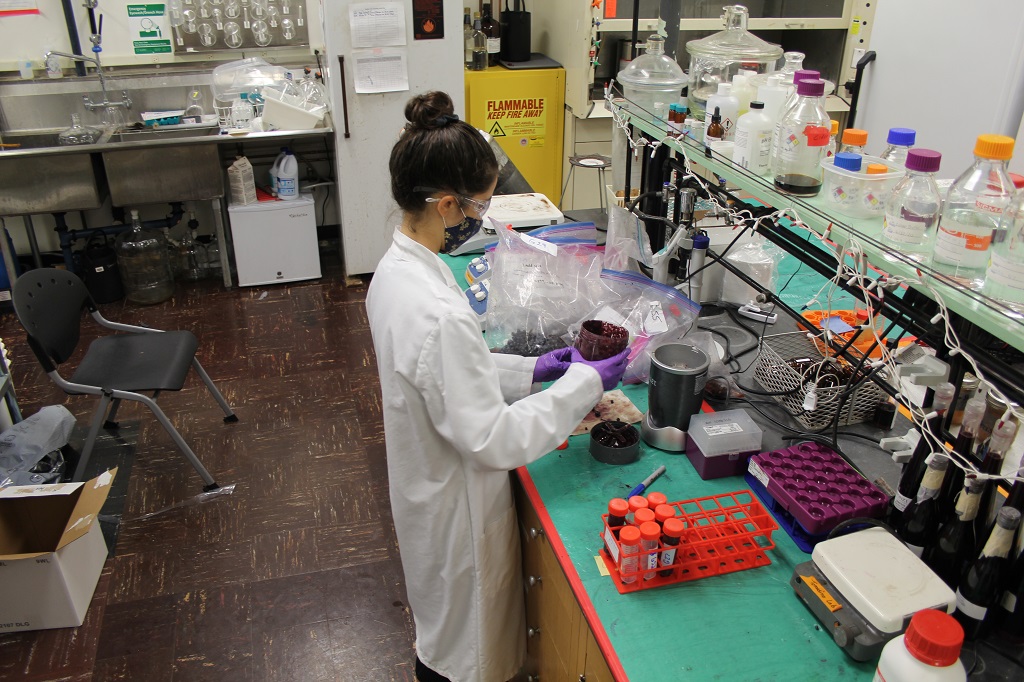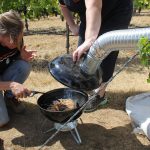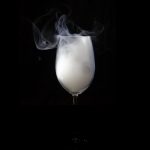Image courtesy Oregon State University
An Oregon State University-led research team has discovered a class of compounds that contribute to smoke taint in wine and grapes.
“This is a critically important for winemakers who are increasingly dealing with the impact of wildfire smoke on their grapes,” said Elizabeth Tomasino, an associate professor of oenology at Oregon State. “It provides them markers that are much more predictive of smoke taint in wine than we previously had.”
For years, a class of compounds known as volatile phenols have been used as markers for smoke taint in wine and grapes. However, they weren’t considered good predictors of smoke taint issues, Tomasino said.
For example, wines with high levels of these compounds often didn’t taste smoke tainted and wines with low levels did taste smoke tainted. This led Tomasino and her team to search for other compounds that were causing smoke taint in wine.
Earlier this year, Tomasino and Jenna Fryer, a doctoral student in Tomasino’s lab, published a paper that outlined a new standard for tasting the smoky/ashy component of smoke taint.
As part of that work, they discovered the new class of sulfur-containing compounds, thiophenols, that in subsequent analysis was found to cause smoke taint when in combination with volatile phenols.
Tom Collins, an assistant professor at Washington State’s Wine Science Center, confirmed that these sulfur compounds were found in wines that had been exposed to smoke and not in samples that had no smoke exposure.
Work done by Cole Cerrato, a postdoctoral scholar working with Tomasino, confirmed the structure of the compounds using Nuclear Magnetic Resonance, an instrument that allows the molecular structure of a material to be analysed by observing and measuring the interaction of nuclear spins when placed in a powerful magnetic field.
Ongoing sensory analysis in Tomasino’s lab has shown that wines are described as smoke tainted when these sulfur compounds are in combination with the volatile phenols.
“This changes the game as these new compounds are a completely different class of compounds than we were previously studying,” Tomasino said.
“Much of the smoke taint mitigation work to date has not been overly successful and now we know because we have been looking at the wrong thing. We should be much more successful over the next year or two in providing mitigation strategies for the industry that are actually effective.”
Wildfires are a significant threat to these industries because persistent exposure to smoke compromises the quality and value of wine grapes and adversely affects wines.
That threat is particularly pronounced on the West Coast of the United States, where California, Oregon and Washington are three of the nation’s top four wine-producing states.
The research will continue due to a $7.65 million grant Oregon State researchers and a team of West Coast university collaborators received last year to study the impact of smoke exposure on grapes.
Oregon State researchers are working with scientists at Washington State and the University of California, Davis, on the four-year project, which is funded by the U.S. Department of Agriculture’s National Institute of Food and Agriculture.
The work aims to provide tools for the grape and wine industries to quickly make decisions about whether to harvest grapes or make wine following a smoke event.
Tomasino will discuss the findings during a presentation at the American Society for Enology and Viticulture national conference in San Diego.
Are you a Daily Wine News subscriber? If not, click here to join our mailing list. It’s free!
















